PDCA was initially called the Shewhart Cycle after its founder, Walter Shewhart, but the Japanese renamed it the Deming Cycle in 1950. It is used to manage processes and systems.
Now, we follow PDCA (Plan-Do-Check-Act) in the context of problem-solving.
- In the Plan phase, we need to define a problem, establish an objective to be achieved and find the cause of the problem.
- In the Do phase, we develop a solution to solve the problem, and once we have the solutions, we need to implement their solutions.
- In the Check phase, we verify whether those solutions are successful. We evaluate the processes and check what process we must follow to implement those solutions.
- In the Act phase, we have standardized as a process.
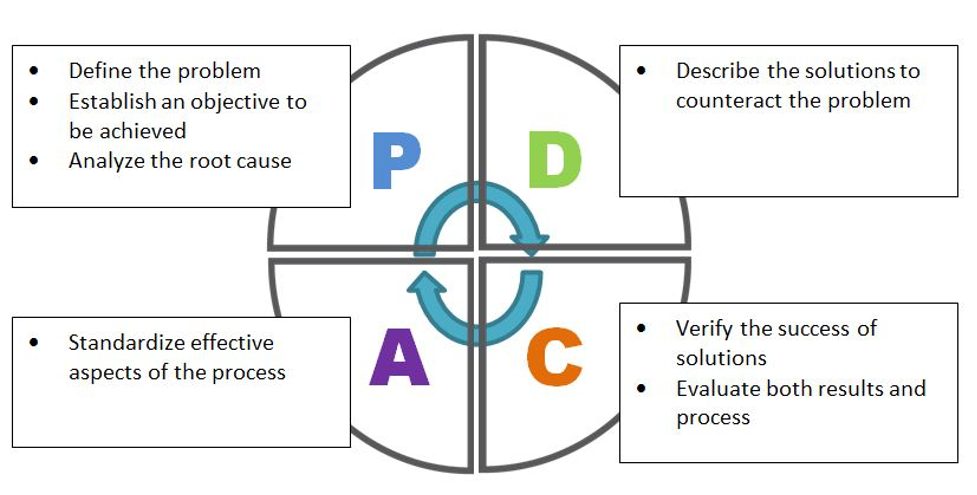
Now, we take a real example of an organization facing a problem.
PLAN: First of all, we need to think about the problem. A business problem is a difference between the current and desired state. If there is any difference, then there is a business challenge that we need to solve. Once we define the business problem, we have to think about the causes of that problem, and then we think about the solutions.
The organization needs to be more consistent in process performance, which is the current state. The organization aims to increase sales volumes in a new market, which is the desired state. As processes are inconsistent, there is a risk of losing customers. They need to be served with the agility, cost, quality, and delivery level they expect. But if we want to increase the volume or acquire new markets, we need to minimize the gap between what we have now and what we expect. We can only think about increasing those sales volumes if we are consistent.
Our objective is to bring our process to a consistent level of stability and performance that leads to sustained improvement.
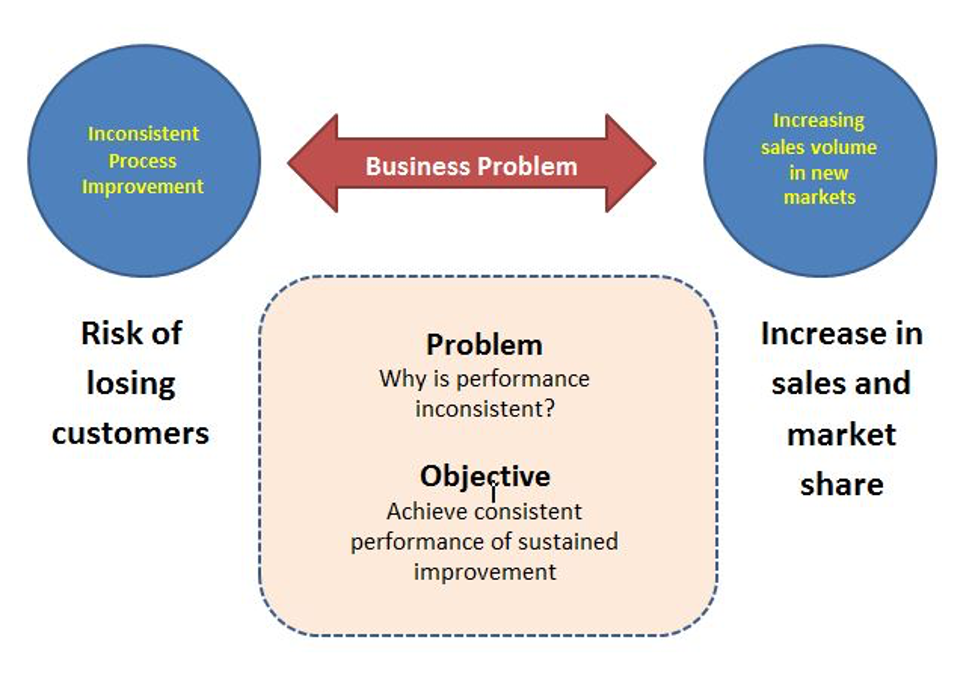
Now, we need to analyze the problem. Why-why analysis, a problem-solving technique, is used for this purpose.
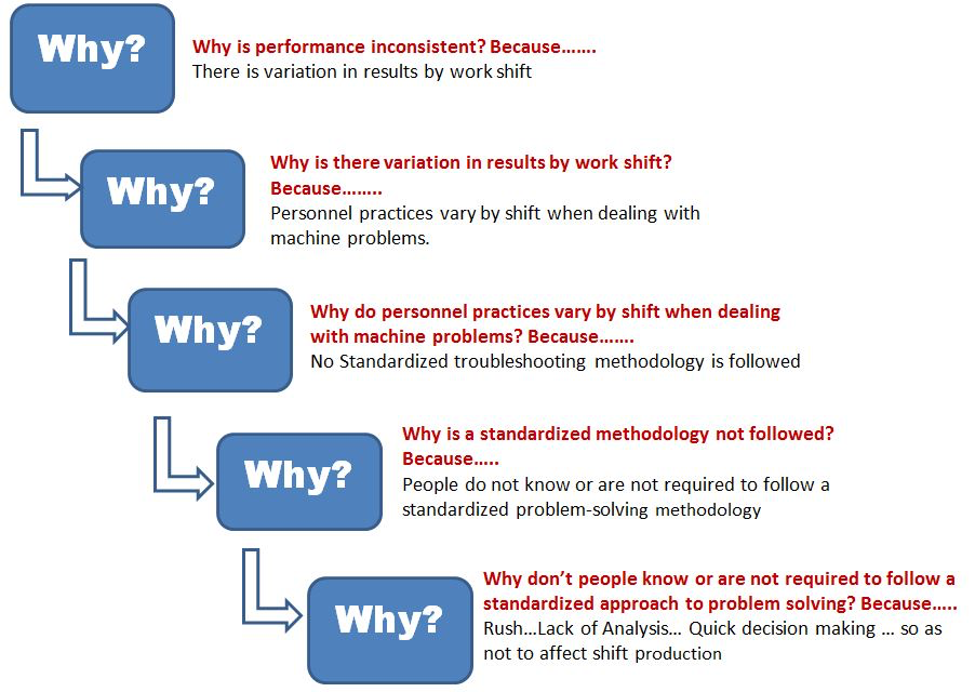
The figure clearly shows that we start with the first why, which was the main problem of why processes are inconsistent. After analyzing the root cause, we decided that the main cause of the problem was a culture of taking quick actions for immediate results to avoid affecting shift production.
DO:
Now, the time is to develop solutions to counter the problem. What aspect of culture needs to be modified, transformed, or changed, and how does culture affect the business problem we see? It is important to know that when we focus on the culture, we must focus on the values, behaviour, systems, and tools adopted and used by any organization. Values are related to what an organization has defined as part of its corporate identity and strategic plans. The
organization has different values that depend upon the business and customers. Values are unique to each organization and somehow intangible. They have different meanings to different people. When discussing integrity and respect, people have different interpretations and meanings for each value. An important aspect here is that we must consider the behaviours people must follow to ensure they are modelling those values. After that, we need to establish systems and tools required to enforce that people behave in the intended way we expect to align the values. There is a change in culture in the way people change their behaviour. We must be specific about the behaviour we want to see in a way that affects the problem.
After that, we do a brainstorming session on the behaviours seen in the people that contribute to the problem as identified in the problem-solving analysis. Following are the behaviours identified in the brainstorming session.
- Execution without planning and analysis
- Lack of respect
- Disagreeing without facts
- Being carried out away by emotions
- Showing indifference
- Not asking for help
- Lack of active listening
- Not paying attention to details
- Planning without understanding
When we are defining the behaviours, we must holistically assess the organization. I used the fishbone diagram with a different flavour to devise solutions to the expected behaviours. So, we need to think about the solutions.
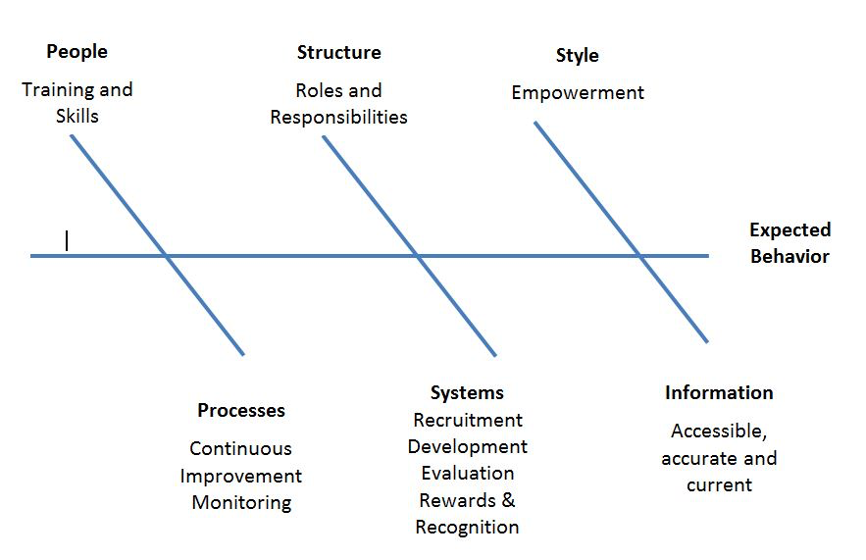
What training and skills do people need to show the behaviours they see? What organizational structure, roles, and responsibilities changes can be made? We need to change the management style or their interactions. We must consider people’s needs and ensure that information is accurate, accessible, and current. We must think about our processes and how we improve and monitor those processes. We must also consider how people’s systems recruit, develop, evaluate, and recognize people. After exercising the brainstorming session, we came up with a solution to the problem of inconsistent performance; we need to set our values as integrity, inclusion, and result-oriented. The set of behaviours we expect people to see is that people collaborate with their colleagues for problem-solving and then implement solutions together. We need to implement systems and tools in the organizational system to support our implementation of quality circles, i.e., forming a group of people to sit together and think about the problems and establish plans to solve the problems seen in the processes. We need to establish a tool for problem-solving. We need performance evaluation with the same objective thinking as a team instead of an individual, i.e., if one wins, everybody wins, and if one fails, everybody fails. In that sense, we promote collaboration. And also have to set a metric for that objective.
These elements needed to be created from the cultural perspective to achieve the desired changes in the behaviour we wanted to see in the people.
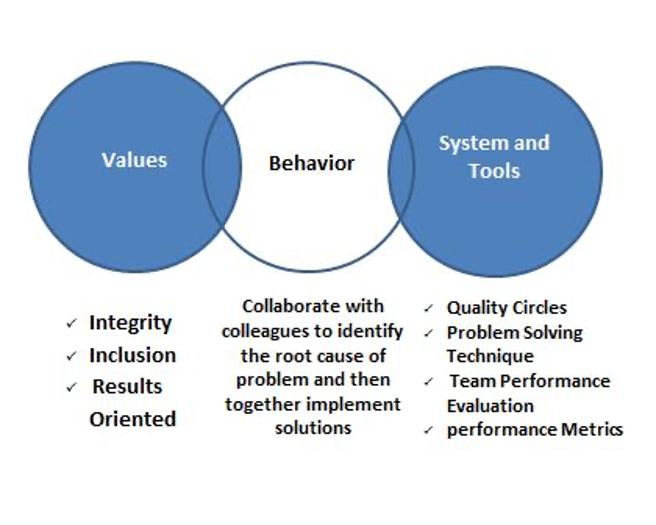
Check: Once we identify the solutions, we go to the check to verify how effective those solutions are and how we evaluate those processes and results. Verify the success of solutions. Let’s see if we have defined the behaviours. We need to train people, and we need to be clear on the expectations of what those behaviours are. People need to be explicit on what they expect, and these behaviours are aligned with the values and the problem we are trying to solve. We need to have people practice and try to get their feedback on how they feel and how things are better, and we need to assess the process and how it is working; based on input, we need to define the next steps we need to follow.
Act:
Once we have done the check, we go to standardize those things that work fine and those that need improvement. We need to start the PDCA process again in another cycle to improve those things that are not working quite as we expect.
The template can be downloaded here.





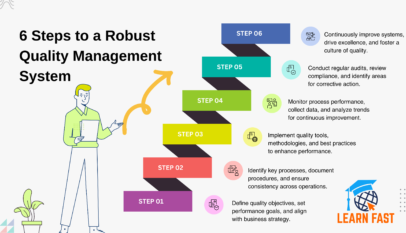

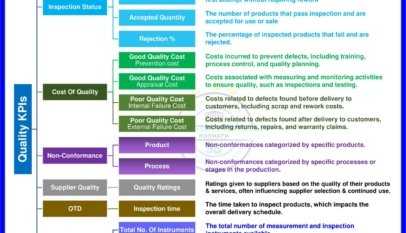

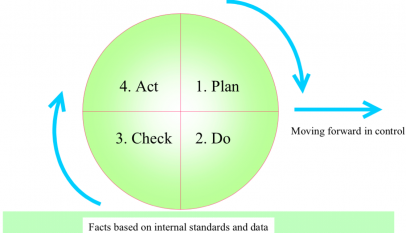







Need the template please
Template can be downloaded here: https://zbk.li/PDCA
I need template, please
Template can be downloaded here: https://zbk.li/PDCA
I need template
Template can be downloaded here: https://zbk.li/PDCA
I liked your article, it is practical. thank you so much
Hi,
I need the templates please.
Template can be downloaded here: https://zbk.li/PDCA
@Helen, thanks for your feedback
Hi, I need the template
Template can be downloaded here: https://zbk.li/PDCA